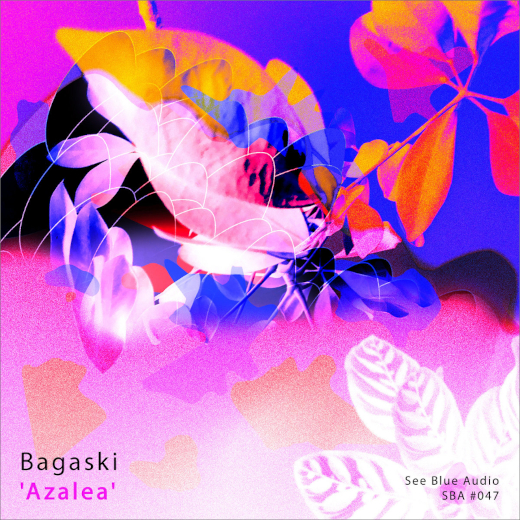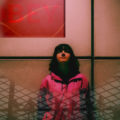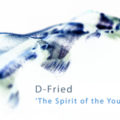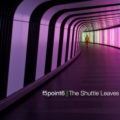With its harsh tones contrasted by a bright spectrum of sound, Azalea, also makes the perfect post-winter offering as the season draws to a close and the cold begins to ease that thermal bite. Spring is for flowers.

A passion for spontaneity and improvisation
They say that Berlin-based artist Bagaski unexpectedly came out of nowhere. Nothing is ever quite what it seems with Bagaski, but what this new release shares with its predecessors is an intense atmosphere, abstract and atonal sounds, a passion for spontaneity and improvisation, the sonic possibilities of the synthesizer, and a fascination with hidden codes and secret numerology. With its harsh tones contrasted by a bright spectrum of sound, Azalea, also makes the perfect post-winter offering as the season draws to a close and the cold begins to ease that thermal bite. Spring is for flowers.
Azalea is of Greek origin and means “dry,” the sound here brings together lo-fi electronics, fidgety improvisational doodles and experiments. With the bright abstract flowery red blue and gold colors on the cover art ornamental shrubs grow, reveled for their showy flowers of various colors, the first track “Hawkish Torso” (3:00) is a stumbling dance with an odd three legged tempo. There is nothing to overlook or forget, the sensation is restless. Then it quiets out for the resolution of the segment. Then, with “Nosebleed VII” (4:18) I find a sparkling wider horizon and the energy picks up even more. There might be a high-hat, there might be a cathedral organ up there. Next we turn in small circles with a choppy beat, “Low Rules the High” (3:48) swirls square interlocking circular melodic fragments, the endless motion never actually stops. Here next the beat is more traditional, things develop inside a little box, “Flower of My House” (2:58) throbs with air beats with simple tone drones. I want to live there. The melodic bits build into old castle ruins in the distant hills.
Warped glitchy sirens take form and are somehow rising up from nowhere to greater heights. This is “Rebirth VIII” (4:34) bringing signals from nowhere and a tapping melody, repeating signals. It must be a code, it gets more complicated. The interval of a semitone in the pythagorean scale that is slightly greater than half a whole tone and is equal to the distance between the tetrachord and two whole tones, “Apotoma” (4:40). What I hear makes me think that somewhere in a great canyon the winds are whistling, and there must be a delicate power in the distance. The percussion and slow motion evokes the emotions from the pain and heartbreak of a person who has been abruptly abandoned by their lover. Lonely, this is just sound.
Irregular wobbling multiple heartbeats ::
Someone said that “Strater” (4:16), with these irregular wobbling multiple heartbeats, with this crackling power, only means “someone who lives on a street.” But what matches that definition in this instance are the wandering tones. No more home to go to, just places to pause. Always repeating into infinity. This next track, “Luioy” (4:56) has a tighter melodic staccato phrasing. I remember something about the cumulative feeling of a strange new side effect, evoking the hope of an imaginary future. Now for the title track, “Azalea” (5:50) and perhaps why we are here. This changes everything in context. The floral sounds are bright and hopeful compared to where we have recently been, I imagine vocals. The sonic sensation symbolizes specific emotions or events. The plants are static except for some animating breezes, the flow is one way and then the other, back and forth in an easy manner. Behold the clusters of brightly colored funnel-shaped corollas and usually deciduous leaves, the sometimes fragrant flowers which according to tradition always represent good qualities of personalities. Again, there is more complexity here than the previous tracks. Can I say that this track feels more finished to me than the previous ones so far? It all makes sense in the moment.
Now the keys are being used even more melodically, “Tetesept” (5:37) is a German source for household medical supplies you might find in a shop on the corner over there, the actual sound can bring attention to figuring out the words while the melodic vapors extend, a clattering percussion emerges from the keyboard breezes, is there really a voice mumbling something? A seventh head?
Bringing me back home now, a more insistent rhythm takes over and I am thinking I know that someone that likes Bach is noodling further back behind me, “Vanishing” (3:10). It is time to go and the beat keeps running. This is an interesting place to be. I like it. I do not understand it. The constant listener makes up new meanings. I will only know tomorrow.
Azalea is available on See Blue Audio. [Bandcamp]
























![Romanowitch :: A critical season substitute (glitch.cool) — [concise]](https://igloomag.com/wp/wp-content/uploads/2025/03/romanowitch-a-critical-season-substitute_tape_feat-75x75.jpg)

